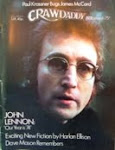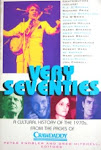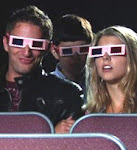Welcome to the first post on the first weekend of the new blog, named after my brand new Web video series. It draws inspiration from my early life, and career roots at the legendary Crawdaddy (during nearly all of the 1970s). The just-released trailer for the series, "An Incompleat History of Rock 'n Roll," features everyone from Roy Orbison and John Lennon to Springsteen, Dylan, Talking Heads, Neil Young and...Jeff Goldblum?. David Wild, the longtime writer and contributing editor at Rolling Stone, calls it "the most promising upcoming Web music series." I've posted about it at Huff Post, where it received star billing. Will Bunch of the Philly Daily News tips his hat here.
This blog will feature the videos but also some of my writings, past and present, on this subject, including excerpts from my forthcoming memoir, a kind of companion volume to the series (first one just below on this page). The trailer for the series, shot and edited by my son Andy Mitchell (of "MacAwesome" fame) follows, and then the excerpt:
Wednesday, December 30, 2009
Saturday, December 26, 2009
Another Excerpt from the Book
As I've noted, an "Incompleat History or Rock 'n Roll" book is in the works and I will be publishing brief excerpts here, out of chronological sequence, of course. The first one is down the page a bit, along with the trailer for the web series. Here is number two.
By 1961, Roy Orbison had supplanted Ricky Nelson at the top of my pops, even as the decade of the rock group arrived with early Motown and the Beach Boys, Phil Spector’s Ronettes and Crystals and all the rest. Orbison’s first big hit, "Only the Lonely," was a template for his future themes.
I had no idea where he’d come from or what he looked like and probably was soon surprised to see that the confident sounding singer looked a little squirelly -- thick horns rim, oily pompadour, lumpy features. Despite these drawbacks, more hits followed. Unlike many rockers of the day, Roy wrote or co-wrote most of his own hits. But even more distinctively, he had an almost operatic voice. He could hit the highs, lick the lows and invigorate the in-betweens, and his lyrics were always spooky, from the despair of “Crying” to the tortured triumph of “Runnin’ Scared.”
He was the Caruso of rock. You knew that almost without fail that in every single he was going to wail, and when he did, or your car radio or transistor speaker was going to tremble like a windowpane caught in high-C hurricane. It was a voice from the other side, unearthly in the majesty of its emotion, almost oppressively powerful, yet in the end fragile and only too human. He was, after all, almost always singing about losing his woman – “It’s Over” unless he was “In Dreams.”
By 1961, Roy Orbison had supplanted Ricky Nelson at the top of my pops, even as the decade of the rock group arrived with early Motown and the Beach Boys, Phil Spector’s Ronettes and Crystals and all the rest. Orbison’s first big hit, "Only the Lonely," was a template for his future themes.
I had no idea where he’d come from or what he looked like and probably was soon surprised to see that the confident sounding singer looked a little squirelly -- thick horns rim, oily pompadour, lumpy features. Despite these drawbacks, more hits followed. Unlike many rockers of the day, Roy wrote or co-wrote most of his own hits. But even more distinctively, he had an almost operatic voice. He could hit the highs, lick the lows and invigorate the in-betweens, and his lyrics were always spooky, from the despair of “Crying” to the tortured triumph of “Runnin’ Scared.”
He was the Caruso of rock. You knew that almost without fail that in every single he was going to wail, and when he did, or your car radio or transistor speaker was going to tremble like a windowpane caught in high-C hurricane. It was a voice from the other side, unearthly in the majesty of its emotion, almost oppressively powerful, yet in the end fragile and only too human. He was, after all, almost always singing about losing his woman – “It’s Over” unless he was “In Dreams.”
Friday, December 25, 2009
First Excerpt from the 'Companion Volume'
From my forthcoming "My Life in Music" book:
It was becoming plain by early 1970 that Rolling Stone had become a lifeline for me, and perhaps, as I neared the end of my journalism schooling, a possible destination. Partly with that in mind, I had written someone there about possibly writing reviews for the magazine. To my shock, Ed Ward, one of the magazine’s regular writers, who I believe was filling in at the review desk at the time, wrote back: Send in a sample. In my mind it was like Norman Mailer suggesting that I send him my unpublished novel.
So I wrote a little pan of the new Simon & Garfunkel album, Bridge Over Troubled Water, which most people, including my girlfriend, loved. I’d soured on the pair, feeling they’d gotten more and more sappy as the decade grew harder and wilder and more creative. Amazingly, Ed replied with a note saying they would publish it in an upcoming issue, I’d get paid about $15, and did I have anything else in mind?
A few weeks later, the fateful issue arrived in the mail. It was the same week we had forced my college to join hundreds of other campuses around the country in shutting down for a couple of days in the wake of the Kent State massacre. Tearing open the magazine, I was so pleased I didn’t even much mind that my byline was misspelled over my first national magazine piece: Gregg Mitchell.
It was becoming plain by early 1970 that Rolling Stone had become a lifeline for me, and perhaps, as I neared the end of my journalism schooling, a possible destination. Partly with that in mind, I had written someone there about possibly writing reviews for the magazine. To my shock, Ed Ward, one of the magazine’s regular writers, who I believe was filling in at the review desk at the time, wrote back: Send in a sample. In my mind it was like Norman Mailer suggesting that I send him my unpublished novel.
So I wrote a little pan of the new Simon & Garfunkel album, Bridge Over Troubled Water, which most people, including my girlfriend, loved. I’d soured on the pair, feeling they’d gotten more and more sappy as the decade grew harder and wilder and more creative. Amazingly, Ed replied with a note saying they would publish it in an upcoming issue, I’d get paid about $15, and did I have anything else in mind?
A few weeks later, the fateful issue arrived in the mail. It was the same week we had forced my college to join hundreds of other campuses around the country in shutting down for a couple of days in the wake of the Kent State massacre. Tearing open the magazine, I was so pleased I didn’t even much mind that my byline was misspelled over my first national magazine piece: Gregg Mitchell.
Subscribe to:
Posts (Atom)



